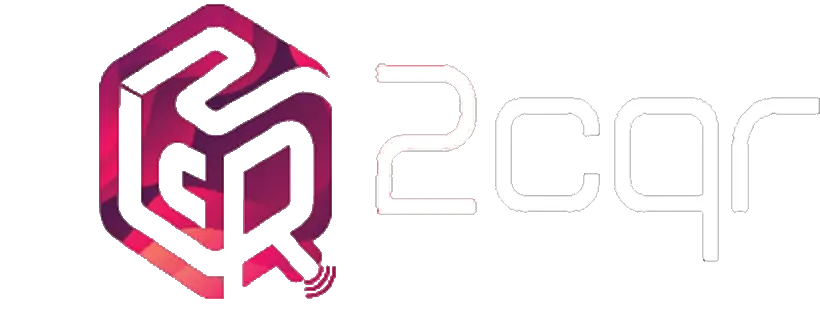What is Digitization in libraries ?
Digitization refers to the process of converting analog information into digital format. Essentially, it involves transforming information from its original analog form, such as text, images, or sound, into digital data that computers can understand and manipulate. This process involves representing data using binary code, composed of combinations of 0s and 1s. Through digitization, information becomes easily storable, transmittable, and manipulable, enabling us to store vast amounts of data in minimal space, swiftly share it over networks like the internet, and effortlessly search and analyze it using software tools. Overall, digitization has changed the way how we store, access, and interact with information in our increasingly digital world.
Many library materials, including paper-based documents, photographs, and manuscripts, are vulnerable to physical degradation over time, attributable to factors such as exposure to light, humidity, and pests. Preserving these materials poses a significant challenge for libraries.
Additionally, libraries face the task of preserving digital materials amidst rapidly evolving technology. Digital formats, software, and hardware quickly become obsolete, complicating efforts to ensure the long-term accessibility and usability of digital collections.
Moreover, preservation efforts demand substantial resources, including funding, staff expertise, and infrastructure. Many libraries, particularly smaller institutions with limited budgets, struggle to allocate sufficient resources to preservation activities.
However, digitization offers a solution by converting traditional formats into universally accessible digital forms. For example, By digitizing books, we make their contents available in electronic formats, ensuring easy dissemination and utilization by anyone with digital access. This process not only preserves valuable knowledge but also improves its accessibility and usability in our increasingly digital world.

Benefits of Digitization in Libraries
-
Preservation of diverse materials :
Digitization allows libraries to preserve a wide range of materials, including old manuscripts, rare books, fragile documents, and aging CDs, by converting them into digital formats. This ensures the longevity of these materials and mitigates the risk of physical deterioration over time.
-
Improved accessibility :
Digitization improves accessibility to library collections by providing users with remote access to digitized resources. Patrons can search, browse, and access digital materials from anywhere with an internet connection, breaking down geographical barriers and expanding the reach of the library's offerings.
-
Facilitates research and scholarship :
Digitized collections facilitate scholarly research by enabling researchers to search and analyze large volumes of materials quickly and efficiently. Digital resources can be easily integrated into academic projects, allowing researchers to access primary sources and conduct in-depth analysis without physical constraints.
-
Preservation of cultural heritage :
Digitization plays a crucial role in preserving cultural heritage by digitizing artifacts, artworks, oral histories, and other culturally significant materials. By digitizing these resources, libraries can safeguard cultural heritage for future generations and make it accessible to a global audience.
-
User engagement and outreach :
Digitization greatly improves user engagement and outreach efforts by providing innovative ways for libraries to interact with their communities. Libraries can create digital exhibitions, online galleries, and virtual tours to showcase their collections and engage users in interactive learning experiences. Additionally, digitized materials can be shared on social media platforms and other digital channels to reach new audiences and promote library services and resources.
The Manual Digitization process :
Manual digitization involves the process of converting analog materials into digital formats through manual labour and traditional scanning techniques. Library staff or hired professionals physically handle the materials, scanning each page or item individually using specialized equipment such as scanners or cameras. Once digitized, the digital files may undergo basic enhancements and metadata tagging manually. Manual digitization can be time-consuming and labour-intensive, requiring meticulous attention to detail to ensure the accuracy and quality of the digital reproductions.
AI powered digitization :
AI-driven digitization starts with manual scanning, but it utilizes Artificial Intelligence technologies to streamline and simplify the digitization process. Here's an outline of the basic steps involved:
- Scanning Process : Analog materials, such as paper-based documents or photographs, are manually placed onto a scanner or other scanning device by library staff or operators. The scanning process is initiated manually, and the analog materials are converted into digital images.
- Training AI Algorithms : The process begins with training artificial intelligence algorithms to recognize and digitize various types of materials, including text, images, and audio. This involves providing the algorithms with large datasets of labeled examples to learn from ( Machine learning ).
- Optical Character Recognition (OCR) : Once trained, AI algorithms utilize optical character recognition (OCR) techniques to automatically extract text from scanned documents. OCR technology identifies characters in scanned images and converts them into machine-readable text.
- Image Recognition : AI-driven digitization systems employ image recognition techniques to identify and classify visual content within digitized materials. This involves analyzing the visual features of images to categorize them accurately.
- Natural Language Processing (NLP) : Advanced AI-driven digitization systems utilize natural language processing (NLP) techniques to analyze and understand the text extracted from digitized materials. NLP enables algorithms to comprehend the meaning of text, extract relevant information, and generate metadata tags automatically.
- Automated Processing : With OCR, image recognition, and NLP capabilities in place, AI-powered systems automate the digitization process. They can process large volumes of analog materials rapidly, extracting text, analyzing images, and generating metadata with minimal human intervention.
Several advantages of AI-powered digitization over manual digitization :
- Availability in Structured Word / PDF formats : In manual digitization, documents are typically scanned and saved as images (such as JPEG or TIFF files), essentially replicating the physical document in digital form. However, in AI-driven digitization, the process often involves more than just scanning images. AI algorithms are used to analyze and process the content within the digital images, allowing for the extraction of text, identification of images, and other types of content.
As a result, in AI-driven digitization, the output may include not only the scanned images but also the extracted text, identified images, and other relevant metadata. These components may be saved separately or combined into a structured digital format, such as a searchable word document or a PDF file. - Better Image Quality : AI-driven digitization can enhance the quality of scanned images. While manually scanned documents may vary in picture clarity, AI algorithms can improve the quality of images by reducing noise, sharpening edges, and enhancing contrast. This ensures that digitized materials are of high quality and clarity. Additionally, the digitized materials can be saved in formats like PDF or Word documents, where everything is clear and easily readable, further enhancing usability and accessibility compared to simple image scans.
- Speed : AI-powered systems can process large volumes of analog materials rapidly and consistently, improving efficiency compared to manual digitization methods. This allows libraries to digitize their collections more quickly and cost-effectively.
- Accuracy : AI algorithms are capable of performing tasks with a high degree of accuracy and consistency. By minimizing human error and standardizing processing techniques, AI-powered digitization improves the quality of digitized materials.
- Automatic Metadata Generation : AI-powered digitization systems can automatically generate metadata tags for digitized materials based on content analysis. This metadata enhances the discoverability and accessibility of digital collections, making it easier for users to search for and access relevant resources.
- Improved Searchability : By automatically generating metadata tags, AI-powered digitization enhances the searchability and navigation of digital collections. For example, consider a library digitizing a collection of historical newspapers. Through AI algorithms, each digitized newspaper article can be automatically tagged with metadata such as publication date, headline keywords, and relevant topics. As a result, users searching for specific articles or topics can easily locate them within the digital collection, facilitating easy research and exploration.
- Insights and Analysis : AI algorithms can analyze digitized materials to uncover valuable insights and patterns within the collection. This analysis can inform collection management decisions, preservation efforts, and user engagement strategies, adding value to the digitized content. For example , If a university library is digitizing its collection of academic journals spanning several decades. AI algorithms can be employed to analyze the content of these digitized journals, identifying patterns in research topics, author collaborations, and citation trends. For instance, through text mining techniques, AI algorithms can extract keywords and topics from the articles, allowing librarians to understand the evolving research interests within different disciplines over time. Furthermore, citation analysis algorithms can reveal influential articles or authors, as well as track the dissemination of scholarly work across various journals.
By using these insights, the library can make informed decisions about collection development, such as acquiring additional resources in emerging research areas or prioritizing preservation efforts for historically significant journals. Additionally, the library can improve user engagement by curating thematic digital exhibits or developing personalized recommendation systems based on the research interests of students and faculty. - Standardization and Consistency : AI-powered digitization ensures standardization and consistency in digitized materials across the entire collection. This consistency improves the user experience and facilitates interoperability with other library systems and platforms.
- Preservation and Longevity : By digitizing analog materials, AI-powered systems contribute to their preservation and longevity. Digital copies are less susceptible to physical degradation and can be easily backed up and replicated, ensuring the long-term accessibility of valuable resources.
In conclusion, AI's integration into library digitization significantly improves preservation and accessibility. By automating tasks like content analysis and metadata extraction, AI automates digitization, making it faster and more accurate than manual methods. This efficiency is crucial for large and diverse collections, as it ensures rapid preservation without compromising quality. Moreover, AI-driven digitization improves accessibility by enabling remote access and enhancing search capabilities, thereby democratizing knowledge. While manual digitization remains valuable, AI offers scalability and efficiency that manual processes alone cannot match. Utilizing AI in library digitization represents a significant step in safeguarding cultural heritage and promoting universal access to knowledge across the globe.
